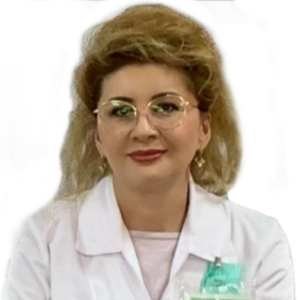Title : Tactics of treatment of patients with genital warts depending on the presence of concomitant infections
Abstract:
Abstract: Genital warts (GW) are one of the most clinically pronounced manifestations of human papillomavirus infection (HPV), and many authors have already referred to the group of background diseases of the genitals. Given the growing prevalence of GW both among men and women and their frequent association with other sexually transmitted infections (STIs) of the new generation, and, consequently, their course against the background of inflammation, it is realistic to assume that, despite the benign nature of genital warts, they are able to participate in starting the mechanism of dysplastic transformation of genital tissues. Especially in cases where the treatment of GW is limited to destruction. In this regard, one of the principles of effective therapy for GW is the combination of destruction with antiviral treatment. Also, one of the desired goals of GW therapy is to minimize traumatic effects and accelerate the healing time. In this regard, the purpose of this study was to optimize the tactics of therapeutic measures in relation to GW.
We observed 48 non-pregnant women diagnosed with genital warts at the age from 18 to 45 years, belonging to the socially adapted contingent of average material income. For the microbiological characterization of the landscape of the urogenital tract, bacteriological, microscopic and PCR studies of the discharge and scraping of the urogenital tract (UGT) were used. For the treatment of patients, a protocol was drawn up, providing for external therapy with imiquimod 5% for 3-4 weeks at home in patients who did not have any associated STIs. Patients with GW on the background of concomitant bacterial STIs were treated with imiquimod against the background of antibiotic therapy in accordance with the identified pathogen. Patients with concomitant herpesvirus STIs were treated with imiquimod against the background of systemic antiviral drugs (isoprinosine, valacyclovir). At the end of antibacterial / antiviral treatment, therapy with antifungal drugs (fluconazole) was prescribed to prevent and treat candidal complications. After 4 weeks, the clinical results of local immunotherapy with imiquimod were evaluated, respectively, a decrease in the number and size of warts by 25%, 50% or 100%. The remaining condylomas were subjected to laser destruction using a CO2 laser. A similar tactic was used to reduce the amount of traumatic effects from destruction.
Results and conclusions. Condylomas appeared for the first time in 25 (52.1%) patients, in the remaining 23 (47.9%) cases there was a recurrent course of GW. Among the infections of the urogenital tract, any pathogens from the STI group or from the composition of the concomitant microflora in the form of a mono-infection or mixed infection were detected in 42 (87.5%) women examined. Pathogens from the STI group were detected in: Neisseria gonorrhoeae - in 1 (2.1%), Chl.trachomatis patients - in 3 (6.2%), Trichomonas vaginalis - in 2 (4.2%), Ureaplasma urealyticum - in 13 (27.1%), Mycoplasma Genitalium - in 5 (10.4%).
As part of mixed or mono-infection, the accompanying microbial flora was represented by the following microorganisms: in 12 (25.0%) patients, fungi of the genus Candida were detected, in 9 (18.8%) - Gardnerella vaginalis, in 4 (8.3 %) - St. Haemolyticus, in 5 (10.4%) - St. Saprophyticus, 4 (8.3%) - Enterobacter, 3 (6.2%) - St. aureus, in 3 (6.2%) - St. Epidermidis, Enterococcae spp, St. Pyogenes, Escherichia coli, Proteus vulgaris.
After the complex therapy, we evaluated the clinical and microbiological results of treatment, which showed that conservative therapy using isolated imiquimod 5%, as well as imiquimod in combination with antibacterial / antiviral / antifungal therapy, gave the following results: 25% of GW underwent resorption and disappearance in 8 (16.7%) patients, 50% - in 18 (37.5%), 100% - in 22 (45.8%). In general, 26 (54.2%) patients needed laser destruction at the end of complex therapy, while the area and number of GW s in them significantly decreased in comparison with the picture during the initial treatment, which also made it possible to reduce the area of destruction. Microbial agents identified before treatment were also eliminated during antibacterial therapy, which made it possible to reduce the inflammatory process and accelerate healing after destruction. GW relapses in the 6-month follow-up period were observed in 3 (6.3%) patients. Thus, a comprehensive assessment of the clinical and microbial background in patients with genital warts followed by adequate antibacterial / antiviral / antifungal debridement in combination with imiquimod 5% can significantly reduce the need for GW destruction, the healing time after destruction, and the number of relapses.



